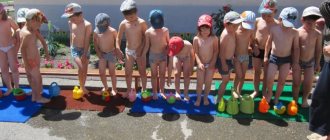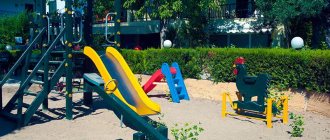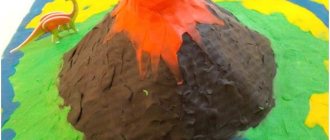Senior group. Regime processes in the first half of the day. Admission of children
SENIOR GROUP
ROUTINE PROCESSES IN THE FIRST HALF OF THE DAY
Admission of children
· Communication between the teacher and children: individual conversations, games for communication and creating a mood in children.
· Organization of independent activities for children: different types of games, work in a corner of nature, visual arts.
· Formation of cultural and hygienic skills: use of a handkerchief, control over appearance, neatness of hairstyle.
· Formation of a culture of behavior: greetings, polite relationships with peers and adults.
· Preparation for morning exercises.
Morning exercises
Hygiene procedures
· Reinforcement of hand washing rules; competition games, teacher conversations about cleanliness; self-control of children; positive assessment of children's activities.
Breakfast
· Table setting: determination of those on duty; familiarization with the menu; selection of cutlery; attracting children's attention to the aesthetic design of tables.
· Attracting children's attention to food; individual work to educate food culture; rules of etiquette; performance assessment.
Preparation for classes
· Cleaning toys; switching children's attention to another type of activity; assessment of children's activities.
Classes
Preparing for the walk
· Creating interest in the walk; individual conversations with children; selection of play material for a walk; motivation for children's activities during a walk.
· Dressing: sequence, going for a walk.
Walk
· Observation while walking.
· Outdoor games: 2-3 games of great mobility; 2-3 games of low and medium mobility; games of children's choice.
· Work on the site: motivation of children’s activities; determining the scope of work; distribution of duties; preparation of equipment; performing labor operations; equipment cleaning; assistance in caring for plants; performance assessment.
· Individual work on the development of movements and physical qualities.
· Independent gaming activity: creating conditions for the development of role-playing games; games with natural materials; didactic games with children; other activities; individual work on speech development, development of elementary mathematical concepts, artistic activities, dramatization of short excerpts from folk tales.
· Returning from a walk: sequence of undressing; monitoring and evaluation of children's activities; games; free activity of children.
Hygiene procedures
· Reinforcement of hand washing rules; competition games, teacher conversations about cleanliness; self-control of children; positive assessment of children's activities.
Dinner
· Table setting: determination of those on duty; familiarization with the menu; selection of cutlery; attracting children's attention to the aesthetic design of tables.
· Attracting children's attention to food; individual work to educate food culture; rules of etiquette; assessment of children's neatness.
Preparation for sleep
· Getting ready for bed: hygiene procedures; creating conditions for organizing sleep; going to bed.
Daytime nap
ROUTINE PROCESSES IN THE SECOND HALF OF THE DAY
Raising children
· Gradual rise, communication between the teacher and the children.
· Awakening gymnastics: preparation for awakening gymnastics, attracting the attention of children.
· Tempering activities: hardening, self-massage, walking on massage mats.
· Formation of cultural and hygienic skills: attracting children's attention to hygienic procedures; hygiene procedures; strengthening hand washing rules; teacher's story about cleanliness; self-control techniques; assessment of children's activities; hand washing sequence; dressing sequence; control over appearance, neatness of hairstyle.
· Formation of a culture of behavior; friendly relationships with peers and adults.
Organization of independent play activities for children
· Communication with children, individual work, games.
Hygiene procedures
· Reinforcement of hand washing rules; competition games, teacher conversations about cleanliness; self-control of children; positive assessment of children's activities.
Afternoon snack
· Preparing for afternoon tea, setting the table; conversation with duty officers; familiarization with the menu, announcing it to children; attracting children's attention to the aesthetics of table design.
· Attracting children's attention to food; individual work to develop food culture skills; rules of etiquette; assessment of children's activities; cleaning tables.
Free play activity for children
· Creating conditions for children’s independent play activities.
Preparing for the walk
· Creating interest in the walk; individual conversations with children; selection of play material for a walk; motivation for children's activities during a walk.
· Dressing: sequence, going for a walk.
Walk
· Outdoor games: 2-3 games of great mobility; 2-3 games of low and medium mobility; for children's choice.
· Individual work on the development of movements and physical qualities: independent play activities; creating conditions for the development of role-playing games; games with natural materials; individual work on the development of speech, artistic activities, dramatization of short excerpts from folk tales.
· Returning from a walk; a game; self-control; monitoring and evaluation of children's activities; sequence of undressing; free activity of children.
The following activities are conducted with children:
| MONDAY | TUESDAY | WEDNESDAY | THURSDAY | FRIDAY |
| 1. ARTISTIC ACTIVITY 9.00 HOUR. – 9.25 HOUR. 2. PHYSICAL EDUCATION 10.00 HOUR. – 10.25 HOUR. | 1.LITERACY TRAINING 9.00 HOUR. – 9.25 HOUR. 2. MUSICAL 10.00 HOUR. – 10.25 HOUR. 3. SOCIO-EMOTIONAL DEVELOPMENT 15.45 HOUR. – 16.05 HOUR. | 1. MATHEMATICS 9.00 HOUR. – 9.25 HOUR. 2. LITERATURE 9.35 HOUR. – 10.00 HOUR. 3. PHYSICAL EDUCATION 10.10 HOUR. – 10.35 HOUR. | 1. SPEECH DEVELOPMENT 9.00 HOUR. – 9.25 HOUR. 2.DESIGN AND MANUAL LABOR 9.35 HOUR. – 10.00 HOUR. 3. MUSICAL 10.10 HOUR. – 10.40 HOUR. | 1. COGNITIVE 9.00 HOUR. – 9.25 HOUR. 2. ARTISTIC ACTIVITY 9.35 HOUR. – 10.00 HOUR. 3. PHYSICAL EDUCATION ON A WALK |
Lesson duration is 25 minutes.
Indicators of educational success for older children
By the end of the school year, your child may:
Cultural and hygienic skills
· Monitor body cleanliness, neatness of clothing and hairstyle. Brush your teeth yourself, keep your nails clean, cover your mouth and nose with a tissue when coughing and sneezing, and turn away to the side.
· Dress quickly and neatly, keep your closet in order (put clothes in certain places), make your bed neatly.
· Correctly use cutlery (fork, knife), eat carefully, quietly, maintaining correct posture at the table.
· Set the table, clear dishes after meals.
Physical education
· Walk on your toes (hands behind your head), on your heels, on the outer sides of your feet, with high knee (hip) lifts, heel-to-toe rolls, side steps to the right and left sides.
· Walk on a gymnastic bench, on an inclined board straight and sideways, on your toes, squatting in the middle, laying out and collecting objects, rolling the ball in front of you with both hands.
· Run on toes with high knee (hip) lifts, small and wide steps, snake, with obstacles.
· Run at speed – 30 meters in 8.5 – 7.5 seconds.
· Jump in length from a place of at least 80 cm, from a run - about 100 cm, in height from a run - 30-40 cm.
· Throw the ball up onto the ground and catch it with both hands (at least 10 times in a row), with one hand (right, left at least 4 - 6 times), throw the ball up and catch it with clapping.
· Throw the ball from one hand to another from different starting positions, in different ways (from below, from behind the head, from the chest, with a rebound from the ground).
· Hit the ball on the ground on the spot, moving forward in steps (at a distance of 5 - 6 m).
· Throw objects at a distance (at least 5–9 m), at a horizontal and vertical target (the center of the target at a height of 1 m) from a distance of 3–4 m.
· Ride a two-wheeler and scooter.
· Participate in exercises with elements of sports games: small towns, badminton, football, hockey.
Sensory education, familiarization with the environment
· Determine the size, color, shape, “weight”, material of objects and, based on this, describe the object.
· Select pairs or groups of objects that match a given characteristic, choosing them from other objects.
· Compare objects with each other (by purpose, color, shape, material), classify them (dishes - porcelain, glass, ceramic, plastic)
· Distinguish and name types of transport, objects that facilitate human work in everyday life, and objects that create comfort.
· Have constant responsibilities around the house, respect the work and activities of other family members. It's good to know your home address. Know the name of your hometown (village), country (Russian Federation - Russia), its main city (Moscow).
· Distinguish between some types of troops; know the rules of the road (cross the street in special places, you only need to cross when the traffic light is green).
· Observe safety precautions: do not play with fire, do not use electrical appliances in the absence of adults, do not touch sharp, piercing or cutting objects without permission. If necessary, independently dial the telephone numbers of the fire service, police and ambulance (01, 02, 03).
· Be attentive to peers and take care of young children. Treat kindergarten employees with respect.
· Establish connections between the state of the plant and environmental conditions, identify the reasons for the changes occurring (the leaves are dry - there is not enough water, the leaves are turning pale - there is not enough light, the plant is weak, growing slowly - there is not enough nutrients).
· Know two to three species of herbaceous plants, four to five species of wintering birds.
· Have an idea of the transition of substances from solid to liquid and vice versa.
Speech development
· Know and use nouns denoting objects from the everyday environment, profession, plants, birds; adjectives characterizing the properties and qualities of objects, emotions, feelings, experiences (hot-tempered, fair, angry); adverbs denoting relationships between people, their attitude to work, characterizing a person’s mood, his rest.
· Select a noun for an adjective (white - snow, sugar, chalk, medical gown), words with a similar meaning (naughty - mischievous - prankster), with the opposite meaning (weak - strong, cloudy - sunny).
· Distinguish by ear and clearly pronounce frequently mixed consonant sounds: s – z, s – c, sh – zh, ch – c, s – sh, zh – z, l – r.
· Coordinate words in sentences: nouns with numerals (five pears, three guys) and adjectives with nouns (frog - green belly).
· Correctly use plural nouns in the nominative and accusative cases; verbs in the imperative mood; adjectives and adverbs in comparative degree; indeclinable nouns.
· Explain the rules of the game, reasonedly evaluate the answer, the statement of a peer.
· Use complex sentences of different types; when retelling, use direct and indirect speech.
· Compose independent stories from experience based on a model, based on a plot picture, based on a set of pictures; write endings to fairy tales; consistently, without significant omissions, retell short literary works.
· Determine the place of sound in a word.
Mathematical representations
· Count (count down) within 10.
· Use cardinal and ordinal numbers correctly.
· Compare adjacent numbers within 10 (based on clarity), establish which number is greater (less) than the other; equalize an unequal number of items.
· Compare objects of different sizes, placing them in a row in ascending (descending) order of length and height. Determine by eye the size of objects: longer (shorter), higher (lower) than the sample and equal to it.
· Measure volume (capacity of vessels, liquid and bulk substances) using conventional measures.
· Distinguish the shape of objects: round, triangular, quadrangular.
· Express in words the location of an object in relation to oneself and other objects.
· Orient yourself on a sheet of paper (left, right, bottom, top, middle), orient yourself according to the plan, diagram.
· Name the days of the week, the sequence of parts of the day (know that morning, afternoon, evening, night make up a day), determine (approximately) the duration of time intervals (1, 3 minutes).
Visual activities
· Identify means of expression in different types of art (shape, color, flavor, composition).
· Know the features of visual materials.
· Create images of objects (based on ideas, from nature); plot images (on themes of surrounding life, natural phenomena, literary works), use a variety of compositional solutions, visual materials.
· Use different colors and shades to create expressive images.
· Make patterns based on folk arts and crafts, use a variety of techniques and elements to create a pattern, select colors in accordance with one or another type of decorative art.
· Sculpt objects of different shapes using previously learned techniques and methods.
· Create small plot compositions, conveying proportions, poses, and movements of figures.
· Create molded images based on folk toys.
· Depict objects and simple plot compositions using the appliqué method, using a variety of cutting techniques, as well as tearing.
Design and manual labor
· Analyze a sample building.
· Plan the stages of creating your own building, find constructive solutions.
· Create a building according to a drawing.
· Bend the sheet four times in different directions, work according to the finished pattern.
· Use scissors correctly.
· Perform simple crafts using the origami method.
· Make toys and souvenirs from natural and waste materials.
Get text
Progress of the regime moment
Children are seated on chairs at tables that are appropriate for the child’s height and “mealtime seating pattern.”
, the teacher talks about what is offered to the children for breakfast today,
(breakfast menu)
wishes them a bon appetit and once again repeats the proverb
“Appetite comes with eating
.
The teacher pays attention to posture while eating and carries out individual work to consolidate the skills of using cutlery.
Q: Officers, what are we having for breakfast today?
D: Wheat porridge, bread with butter and cocoa.
Q: Guys, let's remember in which hand we hold the spoon?
D: In the right hand. And I hold it in the left.
Q: The one who is right-handed holds a spoon in his right hand, and the one who is left-handed holds a spoon in his left. Yura is left-handed, which is why he holds the spoon in his left hand.
Guys, before you start eating, I want to see if you know how to hold a spoon correctly. Show me, take the whole spoon in your hand. (Children take a spoon in their hand)
Guys, not all of you took the spoon correctly. Look how I hold a spoon (the teacher shows how to hold a spoon correctly)
.
My thumb is on top, and my index and middle fingers are on the bottom, helping my thumb to hold the spoon. Now take the spoon correctly (the children take the spoon correctly, the teacher walks by and looks to see if everyone has taken the spoon correctly). Today at breakfast I will observe who held the spoon correctly, who sat correctly, and kept order on the table. He will receive this medal (the teacher shows the medal)
. Then you show it to your parents and tell them why you got it.
Guys, I wish you bon appetit!
D: Thank you!
(The children are having breakfast, and the teacher in a low voice reminds them of the rules of behavior at the table)
Q: We eat carefully, take our time.
Guys, be a little quieter. You are not alone, if you speak all at once and so loudly, you will not hear each other. Remember that first we chew food and only then talk, you can ask for something.
Take the porridge with a spoon from the side that is closest to you. Masha, sit up straight, put your feet together.
Ira, remember how to hold a spoon correctly. (The teacher approaches Ira and shows her how to hold a spoon)
.
Guys, be sure to eat all the porridge, it contains a lot of vitamins. Eat porridge and you will be strong and healthy, you will have a lot of strength and energy for the whole day.
Today at breakfast Kirill held the spoon correctly, his table was clean Masha, Olya, well done Eva, Andrey. They will receive medals. Now I’ll see who I can give medals to.
Those who have eaten, take your plates to the first table . The attendants will remove napkins and plates of bread from the tables.
"Preparation for class"
Class duty
• Check the readiness of workplaces for classes, supplement the workplaces with material missing for classes
• Develop labor skills and abilities;
Materials for the lesson: Flashcards, with pictures of birds, presentation, quizzes.
Direct educational activities (educational areas)
:
1. Cognitive development. Ecology. Topic: “Feathered friends”
Goal: To form children’s ideas about wintering and migratory birds. Learn to solve riddles. Develop interest in the world of birds, curiosity. Give an idea of the importance of birds for the environment. Develop attention and creativity. To create in children a desire to take care of birds.
Materials for the lesson: Landscape sheet, gouache paints, watercolors, brushes, a jar for water, oilcloth.
2. Artistic and aesthetic development. Unconventional drawing. Topic: “Fairytale bird”
(palm drawing)
.
3. Physical development. Physical education on the street (according to physical training plan)
"Free activity of children"
Children's games of choice. Quiet games at the tables. Construction sets , various educational games.
Individual work is carried out:
- develop logical thinking and the ability to prove the correctness of one’s actions.
Didactic game “Count the birds”
- consolidate geometric shapes, develop logical thinking.
Didactic game “Collect a picture”
"Dressing"
,
“Undressing” (for a walk, from a walk)
Tasks:
— Ensure that all children are ready for a walk in a timely manner.
— Form the correct sequence when dressing, carefully fold things
— Consolidating children’s ability to dress independently for a walk and undress after a walk in the correct sequence.
— To consolidate children’s knowledge about spring, the signs of spring.
- Cultivate a friendly attitude towards each other, mutual assistance.
— Cultivate a caring attitude towards things.
Materials: sequential dressing scheme for the spring period, mobile tapes.
Preliminary work:
— Observing the weather while walking, outside the window.
— Examination of illustrations.
— Conversation with children “How to dress in spring”
.




